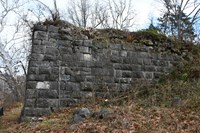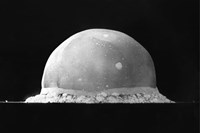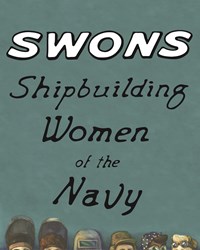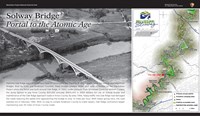- Manhattan Project National Historical Park (112)
- Aleutian Islands World War II National Historic Area (103)
- Golden Gate National Recreation Area (102)
- Boston National Historical Park (85)
- Antietam National Battlefield (84)
- National Mall and Memorial Parks (71)
- Fredericksburg & Spotsylvania National Military Park (70)
- Manassas National Battlefield Park (67)
- Gettysburg National Military Park (64)
- Show More ...
- Geologic Resources Division (172)
- American Battlefield Protection Program (69)
- National Register of Historic Places Program (36)
- National Historic Landmarks Program (27)
- National Center for Preservation Technology and Training (25)
- National Heritage Areas Program (24)
- Park History Program (14)
- Archeology Program (10)
- Harpers Ferry Center (10)
- Show More ...
Showing 3,293 results for Wartime Production ...
- Type: Place

Step aboard Pride II, a reproduction Baltimore Clipper, and sail into the Chesapeake’s maritime past. Explore its history from privateering in the War of 1812 to life on the Bay today. Tour the deck or set sail for a hands-on adventure! As part of the NPS Chesapeake Gateways, Pride II offers a unique way to experience the Bay’s seafaring heritage.
Memorial Wall of Names
Mabini Monuments
- Type: Place

Two monuments to Apolinario Mabini stand along the Asan Beach Trail. Mabini was the Prime Minister and Secretary of Foreign Affairs of the first Philippine Republic from January 23, 1899 – May 7, 1899. When the United States acquired the Philippines from Spain at the end of the Spanish-American War in 1899, Mabini and his followers refused to take an oath of allegiance to the United States and were exiled to Guam.
Historic Turnpike Crossing
- Type: Place

The Valley Turnpike was the main transportation route through the Shenandoah Valley in the early 1800s. During the Civil War both US and Confederate armies used it. The armies contested the crossing at Cedar Creek during the campaigns of 1862 and 1864, with the bridge burned and rebuilt several times.
Assan through the Ages
- Type: Article

Assan Beach, the 2,500-yard shoreline stretching between Punta Adilok (Adelup Point) and Punta Assan (Asan Point), which the Marines in World War II called a "pair of devil horns," is a poignant symbol of the Guam's complex history, blending indigenous CHamoru traditions, wartime struggle, and ongoing military presence. In many ways, the story of Guam can be read through the story of Assan Beach. Talk a walk through history at Assan Beach.
Marching for Justice in the Fields
- Type: Article

The farm workers who marched from Delano to Sacramento represented the large, seasonal labor force, composed overwhelmingly of people of color, whose labor made California’s thriving agricultural industry possible. Although their labor produced fortunes from the soil, they were subjected to poor wages and working conditions. This article is an introduction to the issues that motivated the Delano Grape Strike and the 1966 march.
Anna Arnold Hedgeman (1899-1990)
- Type: Article

This page is part of a six-part series exploring DC current events through Fugazi concerts. Each article shares audio clips of banter in between songs at Fugazi shows, where band members and local activists weigh in on current events in DC & national politics. This article focuses on the punk community's perspectives on the United States' involvement in wars in the middle east.
- Type: Article

Fort Des Moines is a military installation in Des Moines, Iowa. During World War I, the fort served as the first and only training site for African American officers. During World War II, Fort Des Moines was the first training site for the Women’s Army Auxiliary Corps (WAAC) and the Women’s Army Corps (WAC), and the only training site for WAC and WAAC officers.
The JN-4 Jenny: The Plane that Taught America to Fly
- Type: Article

The Curtiss JN-4 Jenny is synonymous with the “barn storming” era of aviation, and is truly the airplane that taught American pilots of the 1916-1925 era how to fly. This training airplane, designed by a team working for the Curtiss Aeroplane and Motor Company in 1914-1915, was built in the thousands in during World War I to train US servicemen how to fly.
K-25 Gaseous Diffusion Plant
- Type: Place

The K-25 Gaseous Diffusion Plant was the largest building in the world during the Manhattan Project, longer than two Empire State Buildings laid side by side. The plant used the gaseous diffusion method, one of three methods the Manhattan Project used to produce enriched uranium. K-25 no longer exists. Visitors to the K-25 History Center are able to view the location where it once stood.
- Type: Article

The year 2025 marks the 10th year since Honouliuli was designated as a National Monument, cementing it as a unit of the National Park Service. In 2019, Honouliuli National Monument was established as Honouliuli National Historic Site. To celebrate its 10th anniversary as a park, Honouliuli National Historic Site is partnering with over 50 organizations to connect communities to its important history of incarceration of prisoners of war and American civilians.
Frances Winifred Williams
- Type: Article

Northern Colorado Plateau Network’s scientists use satellite observations of vegetation condition in Curecanti National Recreation Area with climate data over time to reveal how climate influences plant production and phenology. Knowing which of the wide range of 16 vegetation assemblages found in Curecanti are more or less sensitive to climate change can help managers understand what to expect over the next few decades, and plan for the changes coming their way.
The Sinking of the SMS Cormoran and the First US Shots of World War I
- Type: Article

On December 13, 1914, the German auxiliary cruiser SMS Cormoran, out of fuel and cut off from Germany by World War I, took refuge from Japanese warships in Guam. The ship spent the next two years interned in Apra Harbor. When the United States declared war on Germany in 1917, the Cormoran's captain blew up the ship rather than let her fall into enemy hands.
- Type: Article

War in the Pacific National Historical Park is working to protect Guam’s biodiversity by managing invasive species like brown tree snakes and little fire ants while safeguarding native wildlife, including the endangered Guam tree snail. A recent study assessed the park’s Guam tree snail population, providing essential data to inform conservation efforts aimed at restoring the island’s fragile ecosystem.
Trinity Site, NM
- Type: Place

On July 16, 1945, Manhattan Project scientists detonated the world’s first atomic device, known as “the Gadget,” at 5:29 am Mountain War Time. The US Army conducted the test at the Trinity Site in the Jornada del Muerto desert about 210 miles (337 km) south of Los Alamos, New Mexico. Today the Trinity Site is part of the White Sands Missile Range and can only be visited during a Trinity Site Open House, typically hosted twice a year.






